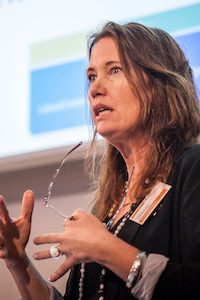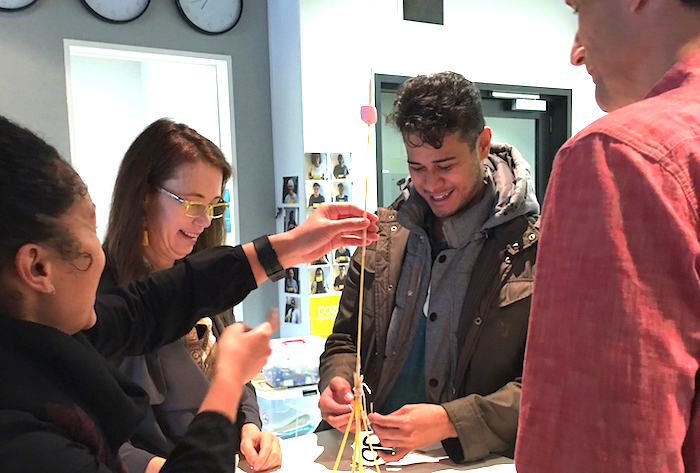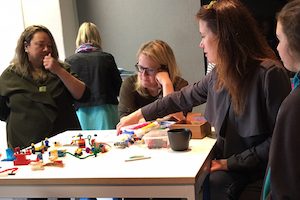Framework puts community at core of achieving health equity
1 February 2018
Inequity is a problem in today’s health system. Why do some communities – notably Māori and Pasifika – have far worse access to health care and worse health outcomes than others in Aotearoa – and how can we fix this?

This is an important issue that one Healthier Lives project is working to address. He Pikinga Waiora is aimed at finding better ways of creating effective health interventions for Māori communities who continue to suffer from poorer health, particularly in the area of non-communicable diseases (NCDs) such as diabetes, heart disease and obesity.
He Pikinga Waiora researchers have been working on ways of creating and doing NCD health interventions differently. One of the lead researchers, Professor John Oetzel, explains.
“It’s a multi-faceted problem that we’re trying to solve,” he says.
“There are inequities for Māori, who have higher rates of these health problems and more significant consequences. We want to introduce a new approach to try and address that; not only to improve those health conditions, but to reduce the inequities.”
Framework integrates key factors

He Pikinga Waiora has developed a framework for health interventions based on four pillars:
- Cultural-centredness
- Community engagement
- Systems thinking
- Integrated knowledge transfer
The framework is intended as a planning tool for funders and community organisations to plan, implement and assess health interventions.
The framework has already been embraced by public health researchers and groups around the country.
Principal investigator in one arm of the project, Dr Nina Scott, points to several large programmes where the framework has been used. The Ministry of Health has developed guidance for DHBs on how to roll out the National Bowel Screening Programme, based on the framework. Arthritis New Zealand is planning to use the framework in developing a programme to combat gout for Maori. And Harti Hauora Tamariki, a Waikato-based comprehensive, equity-focused child health programme, is offering screening, interventions and follow-up packages to children in hospital and their families.
He Pikinga Waiora Implementation Framework (PDF)
Systems thinking in action for tamariki
Dr Scott says Harti Hauora is a good example of one of the framework’s components, systems thinking, in action.
“It’s about having a holistic approach to things”, says Dr Scott.
“We found that many of the kids aged 0-4 years who are hospitalised with diseases of poverty are being re-admitted within six months. We’re not fixing the root cause of the disease, which is poverty. But there are quite a lot of things we can do to address that, like making sure they have a warm, insulated house, making sure they are enrolled with a GP, making sure they’re immunised, the parents get some good smoking cessation support, all of these things. The Harti screening tool and follow up protocols make it really easy for hospital staff, who didn’t have time before”.
Co-design strengthens effectiveness
The He Pikinga Waiora framework also involves the concept of co-design: the idea that researchers work with communities and health organisations to collaboratively create interventions, so there’s ownership of the project from the community and the organisations that implement it.
“So basically, whoever the intervention is for has a stake and a say in what gets done,” says Professor Oetzel.
How this works in practice varies from project to project, but the approach is the same. Harti Hauora Tamariki was co-designed with paediatric nurses, and parents of children who had been hospitalised, for example.
“Let’s say you have a DHB that’s interested in addressing a particular health inequity,” says Professor Oetzel.
“Our framework suggests that what you need to do is find people who are impacted by this condition, and make sure that they are at the table when figuring out what needs to be done and how it should be done. It’s not just the DHB saying ‘Here’s what we need to do, based on international best practice’. We actually need to go to the community and say ‘here’s what we’ve learned from international best practice. How does it resonate with you? What do you want to be done differently? Would this work? Would it not? Why?’ And so on and so on.”.
Although this sounds logical, and it has been done before, it isn’t a mainstream way of designing a health intervention. Typically, says Professor Oetzel, things are done either in a top down, ‘this is what we’re going to do’ approach, or a slightly consultative approach, “where we might bring in a community focus group and ask them a few questions, and then we’ll go ahead and design the intervention for them.”
Co-design means the community has influence on all decisions.
Building relationships key to co-design
A co-design process has its challenges, though. It’s more time-consuming than traditional approaches, for example.
“DHBs are under time pressure, and this is hard to do, and it’s hard to do well. Ultimately its success depends on building strong relationships, and that doesn’t happen in a meeting or two. It happens over the course of six or twelve or eighteen months, to be able to really get to the point where you can have that trust to do something.”
Foundation for men’s health programme

That’s how it’s worked for the project Professor Oetzel is leading in the Bay of Plenty. His team has spent the past 18 months building relationships and engaging with stakeholders and local community groups, to get to the point where they’re ready to start a one-year pilot programme in January 2018.
Working in collaboration with health providers in Whakatane, Poutiri Trust, Eastern Bay Primary Health Alliance, Te Puna Ora o Mataatua and Manna Social Services Trust, the project will be a complex intervention involving four facets.
The first key element involves working with men who are at risk of NCDs – diabetes, CVD or obesity – on building relationships. “They’re people who the health system hasn’t engaged with well and who haven’t used the health systems much so may not have a lot of trust in the system. The first element we’re going to have is a ‘navigator ‘- a kaiarahi – someone who can help them navigate the system, who can be there for questions and guidance, go to appointments, be an advocate and help them with how things work.”
The men will undergo screening to identify those at risk, who will then go through a whanau-based lifestyle intervention involving understanding nutrition, cooking classes and physical activity.
The last facet of this intervention is one that demonstrates the power of community engagement, Professor Oetzel explains.
“We will ask a subset of those men to become community activists, to engage in the health of the community, led by the kaiarahi, who will help guide them on how to make better choices for the community as a whole, to try to have some larger influence.”
This points to a key outcome of projects designed using the framework: sustainability.
“The ideal outcome certainly is an improvement in health. If we’re talking about people with pre-diabetes or at risk of CVD, they don’t progress to diabetes or CVD”, says Professor Oetzel. But a second key outcome is sustainability of the intervention itself.
Sustainability key strength of co-design
“One of the things that… sets [co-design] apart is that when the research project ends, the intervention doesn’t. The people have bought into it and want to see it work, and so they sustain it despite the end of the research funding…We’ve already had conversations with our community partners about how to make this work beyond next year.”
In another branch of He Pikinga Waiora, a similar scene is unfolding.
Te Kōhao Health Community Project

Dr Nina Scott is leading the Te Kōhao Health Community Project, which will involve an intervention in the Waikato to address diabetes.
After a long community engagement process (“We knew that engagement and relationship development would take a long time, and it still took twice as long as we expected,” says Dr Scott), it’s hoped the intervention will start in February.
It’s a community based, three-stage intervention at multiple levels. A community researcher has already been employed.
Taking a systems-based approach, after baseline assessment, people with pre-diabetes or newly-diagnosed diabetes will be invited with their whanau members to go through a version of the Harti Hauora Tamariki tool, tweaked for adults.
“We’ll make sure they can access the WINZ support they’re eligible for; smoking cessation; if it’s flu season making sure they can have vaccinations, that sort of thing”, says Dr Scott.
The second step is a 12-week intensive course for patients and whānau, based on an existing cardiac rehab programme. Once this is underway, “after the second week of that we will start the co-design community process,” says Dr Scott, who hints at an exciting social enterprise aspect to be added.
Toolkit to support health equity
The end goal for both projects is to have tested the framework and measured if it works, as well as having developed tools for others to use.
“At the end of this we will put the lessons from these two projects into a toolkit”, says Dr Scott, “that can be picked up and used in different projects and places.”
If the framework can help influence leaders to have a stronger commitment to achieving health equity, and more projects can spread to other organisations, neighbourhoods and communities, it’s hoped, health inequity may soon become a thing of the past.
Sign up to our Newsletter
"*" indicates required fields


